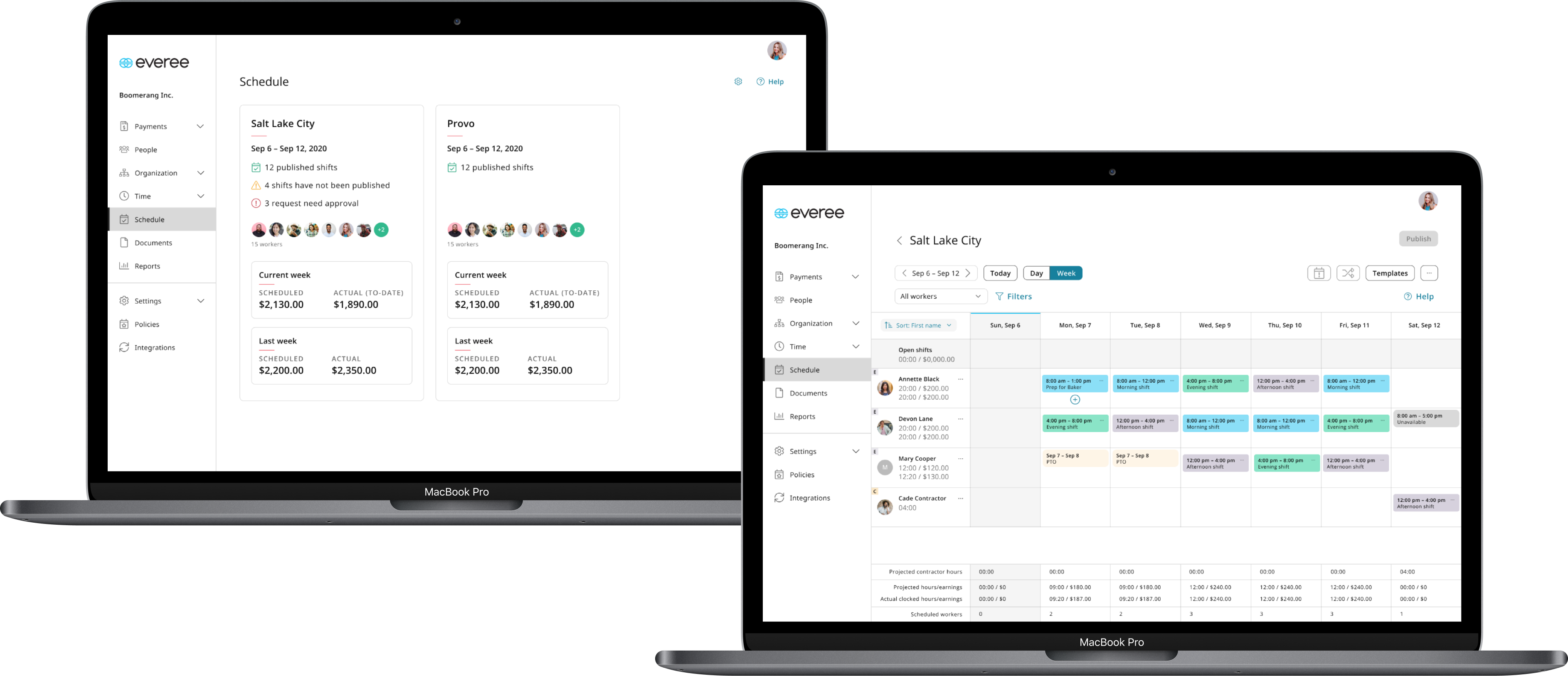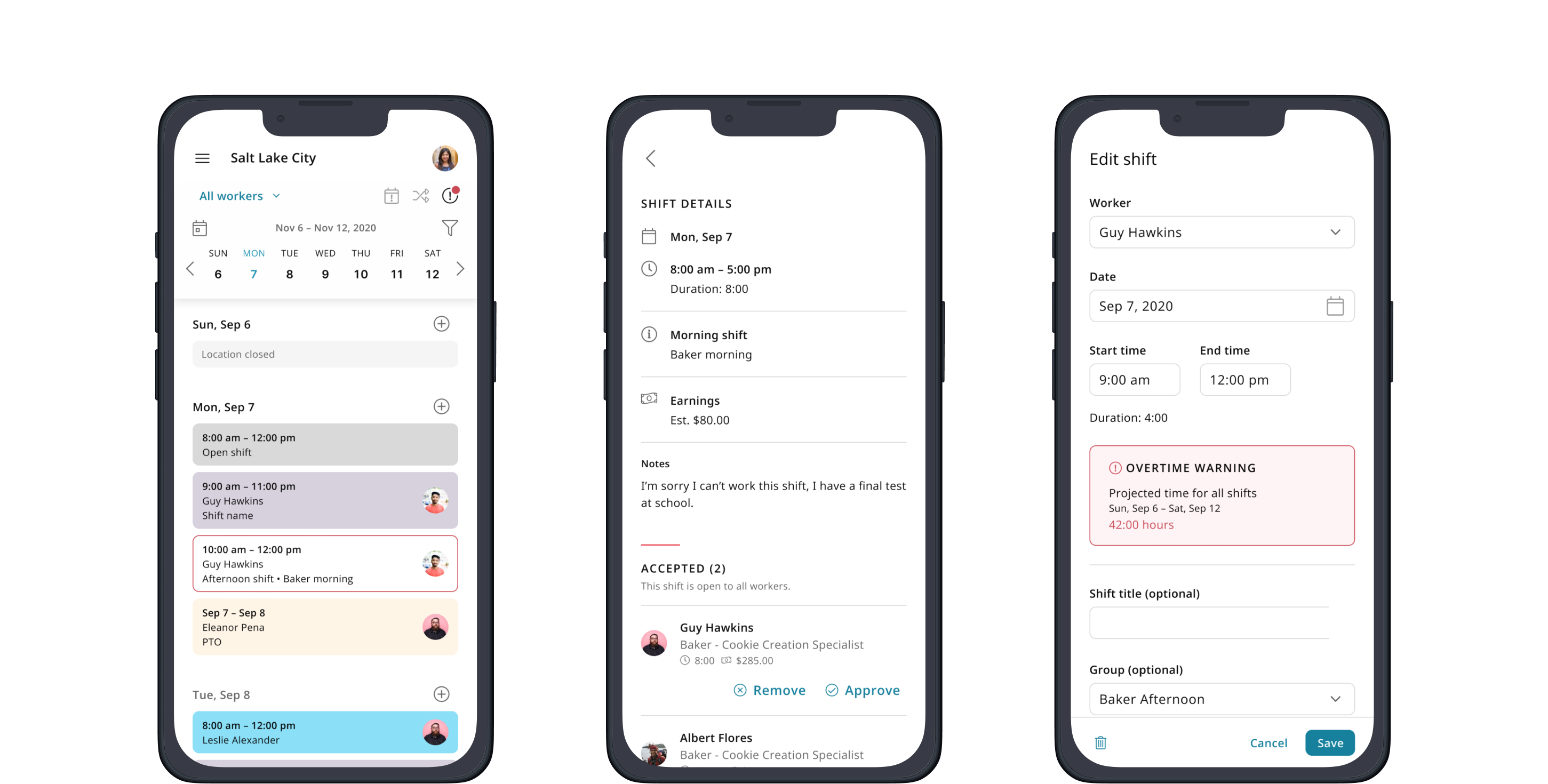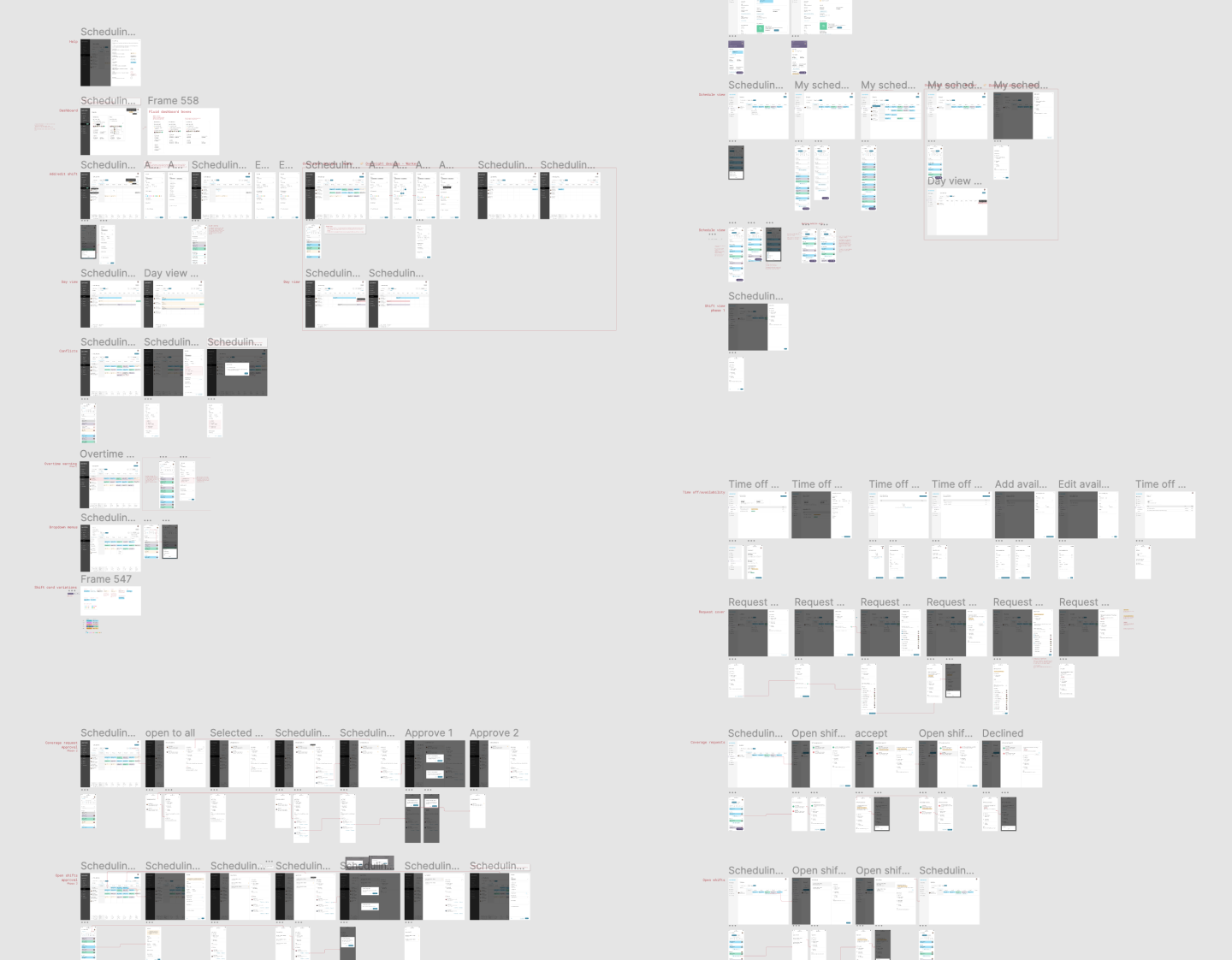Employee Scheduling
Lead Product Designer • Everee
Designing a scheduling solution that closed a critical product gap, reduced sales objections, and empowered HR managers to manage shifts more efficiently.
We were losing too many deals because our HR solution was incomplete, particularly in terms of employee scheduling. Our business goal was to create a scheduling experience that would make our payroll and time clock solution competitive and appealing to the HR buyer persona — a key decision maker for small- to medium-sized businesses.
Understanding Buyer Expectations
I began by interviewing sales reps and customer success teams to understand why prospects were walking away. The insights were consistent: HR buyers expected scheduling to be part of an integrated HR solution, and the absence of this feature was creating friction in the sales process. I mapped out the competitive landscape, analyzing how tools like Homebase and Deputy positioned scheduling as a core offering.

Insights from Small Business Owners and Managers
We conducted user interviews with small business owners, HR managers, and shift supervisors across various industries, including hospitality, retail, and healthcare.
Their pain points clustered around three areas:
- Flexibility: Shifts needed to be updated on the fly.
- Fairness: Employees wanted visibility into their schedules and easy ways to swap shifts.
- Integration: Manual entry between payroll, time tracking, and scheduling created errors.
We also ran a series of surveys with managers, observing how they currently hacked together solutions using spreadsheets or standalone scheduling apps.
Clarity and simplicity
Using these insights, I designed a scheduling system that prioritized clarity and simplicity.
- A calendar-based interface where managers could quickly assign and adjust shifts.
- Drag-and-drop scheduling to reduce setup time.
- An employee self-service portal for swapping and requesting time off.
- Integration hooks so scheduled hours flowed seamlessly into payroll and time tracking.
We conducted several usability tests with HR managers to improve interactions and ensure that scheduling supported, rather than hindered, their workflows.


The scheduling tool launched as a core addition to our HR suite. The impact was clear:
Leveraging Sales Insights to Drive Product-Market Fit
This project reinforced the importance of listening to the sales pipeline as a research source — often, lost deals are the clearest signal of what’s missing. It also highlighted my ability to connect research insights directly to product-market fit. By designing for both HR buyers and frontline managers, we delivered a solution that met strategic business goals while solving day-to-day scheduling pains.

